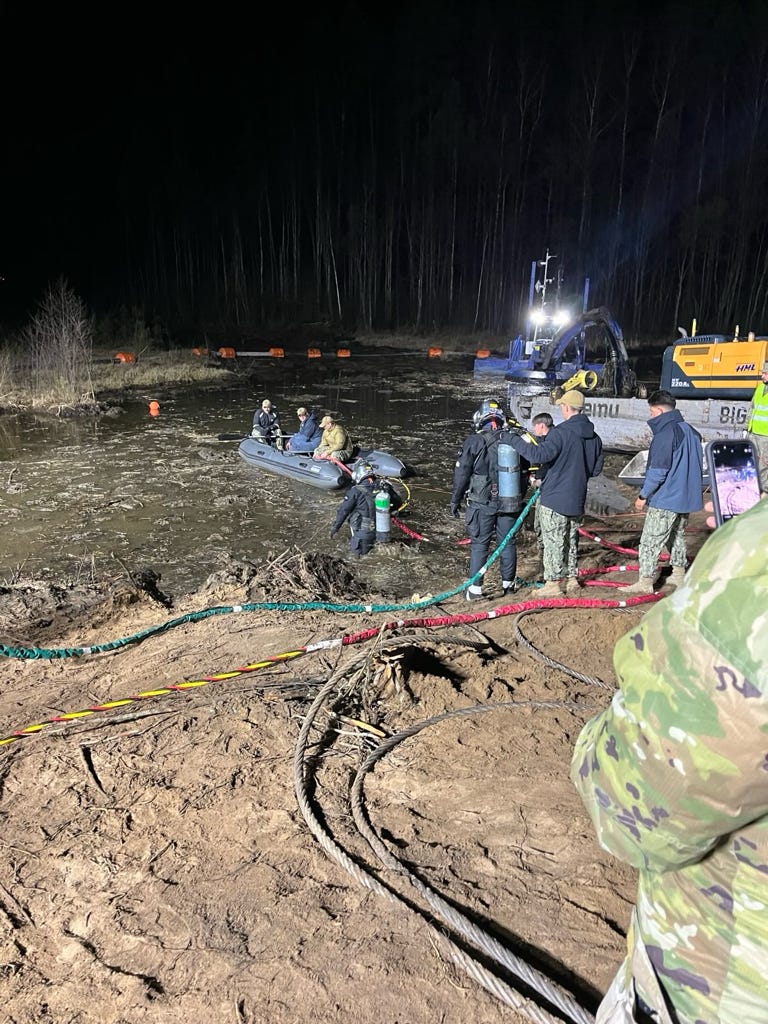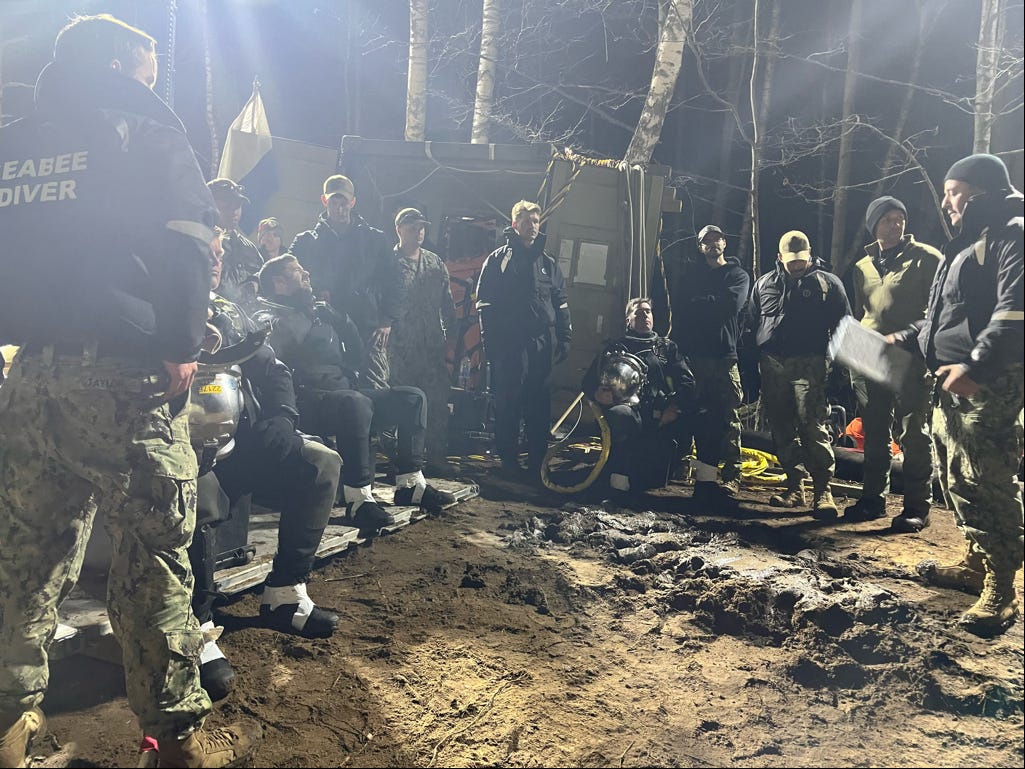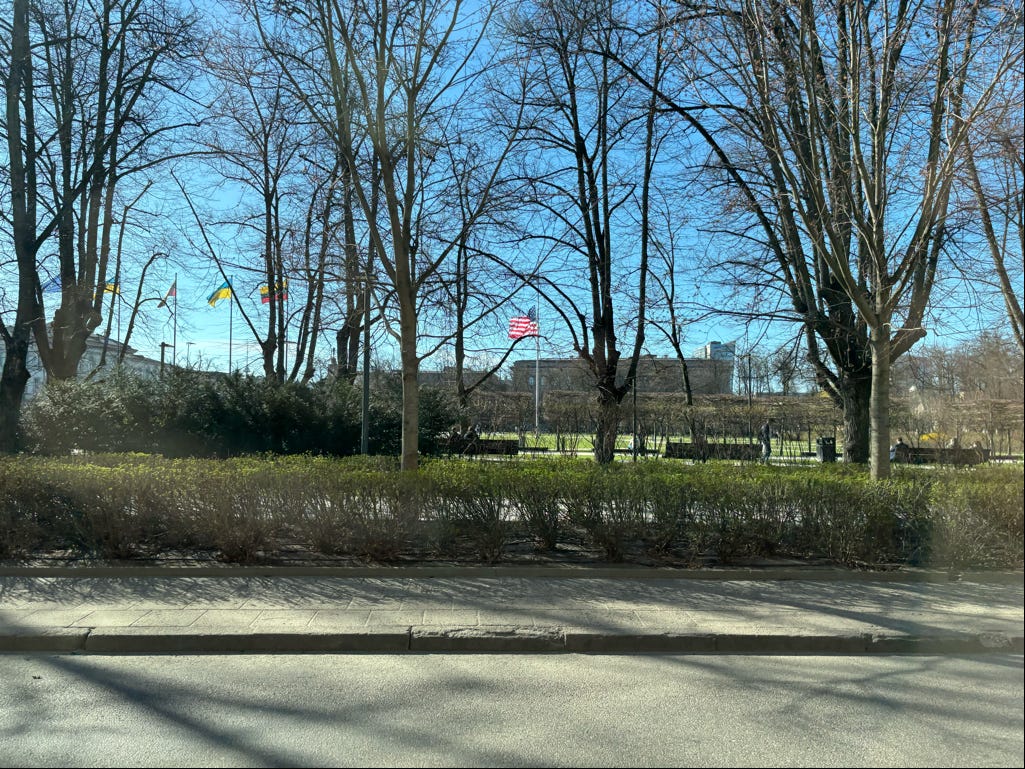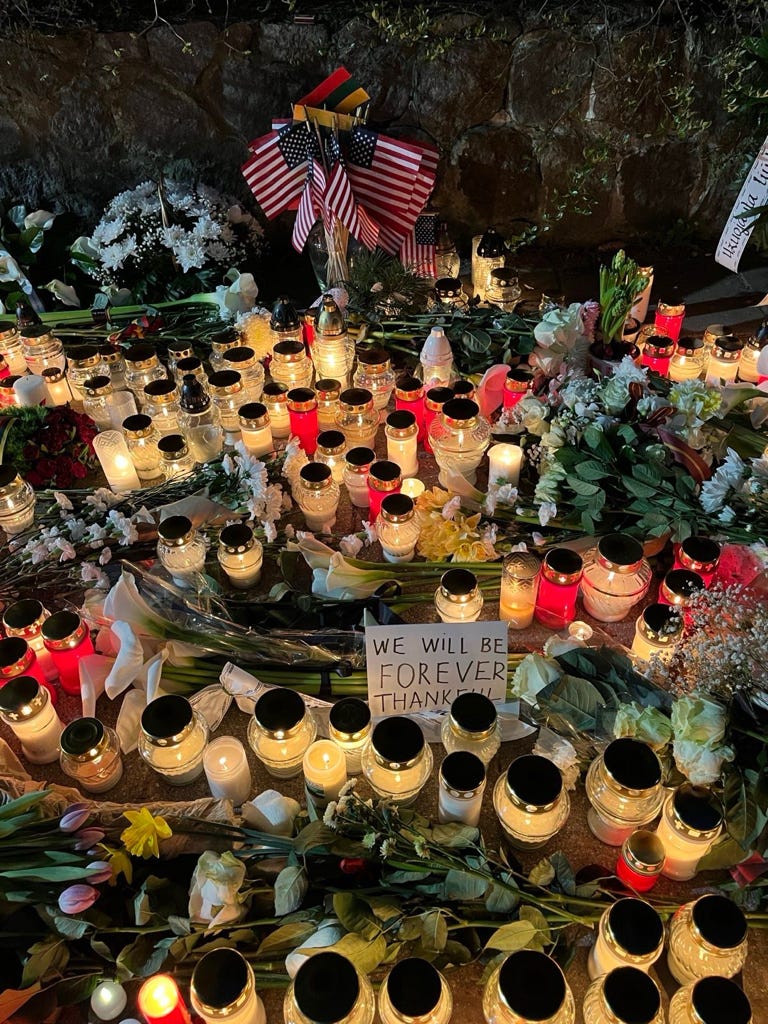
When American Soldiers Were in Trouble, Our Allies Showed Up
Inside the allied effort to find four soldiers lost in a training exercise.
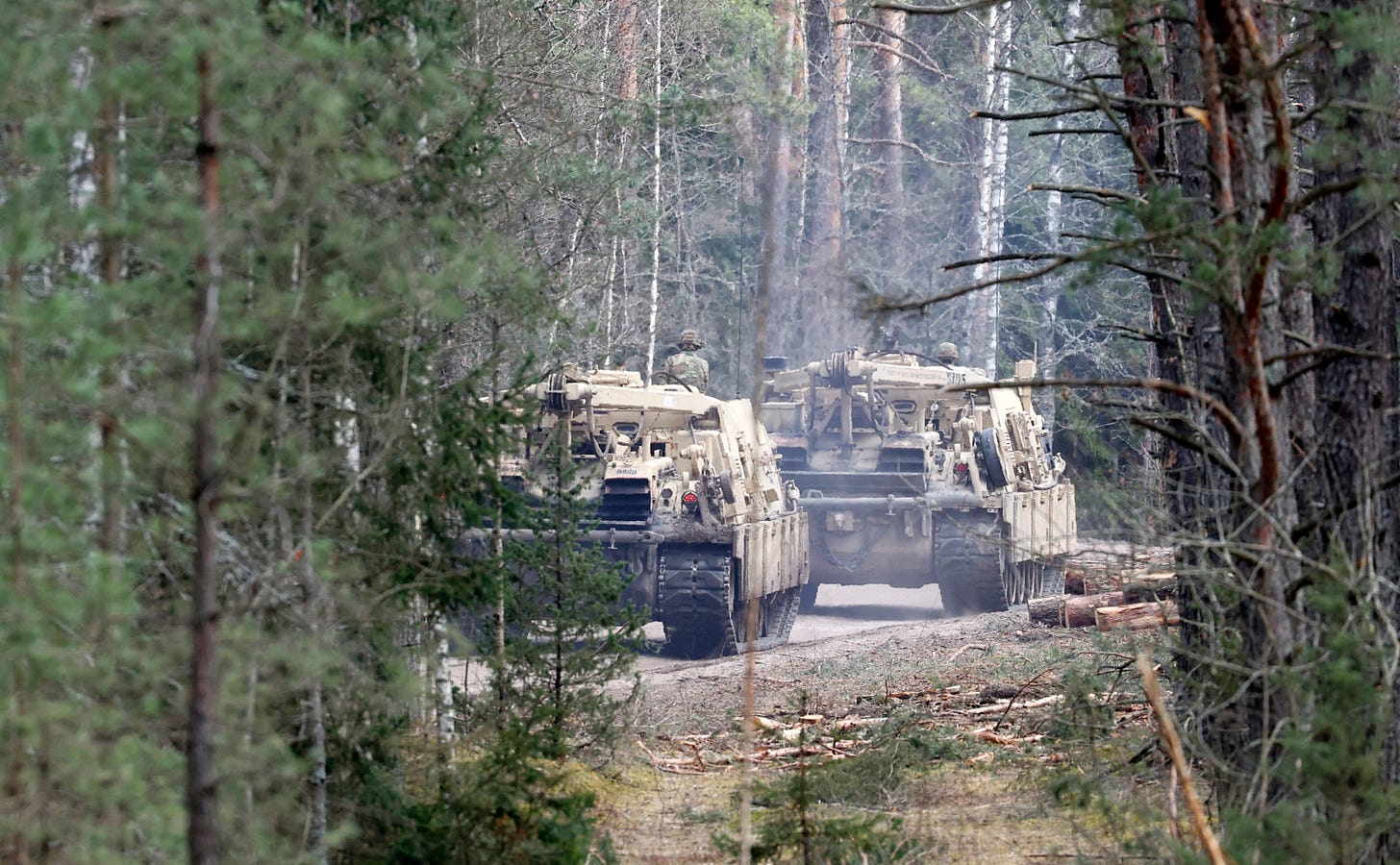
OVER THE LAST WEEK, amid government turmoil, massive new tariffs, a stock market free-fall beckoning a possible recession, and other major news, many Americans likely missed a story that was unfolding in the normally quiet forests of Lithuania. Four U.S. soldiers, including three seasoned and professional non-commissioned officers, tragically lost their lives when their M88 Hercules recovery vehicle was swallowed by a hidden sinkhole during a training mission. The remains of Staff Sgt. Jose Duenez Jr., Staff Sgt. Edvin F. Franco, PFC Dante D. Taitano, and Staff Sgt. Troy S. Knutson-Collins were recovered after an exhaustive eight-day operation that showcased not only the unwavering commitment of American forces to their fellow soldiers, but also the profound solidarity of our allies in Europe.
As a former tanker who spent much of a long career in Europe, I know the training ground at the Pabradė Training Area. I used to command the 1st Armored Division, the unit to which the four fallen soldiers were attached for the exercises in Lithuania, and I know and admire the current commander, Maj. Gen. Curtis Taylor. So my ears perked up when I first heard the report of missing soldiers. Having faced similar crises, I know the anxiety and urgency that faces any commander when soldiers go missing. The Army is always parsimonious with the details it gives to the media, so much of the story of the search and eventual recovery of those four soldiers’ remains and their vehicle hasn’t been told. But the details of those eight days that I’ve heard from soldiers involved in the operations is a testament to the seven Army values. The story also highlights the loyalty of our allies, which I came to know so well when commanding U.S. Army Europe. As the nature of our alliances changes, and many Americans seem to be questioning the value of having friends abroad at all, it’s a story worth hearing.
THE INCIDENT BEGAN WITH A CALL for assistance passed between military units, something that happens all the time in the training environment. A Joint Light Tactical Vehicle—a small Army truck—had become mired in mud at night during an artillery training event at Lithuania’s Pabradė Training Area. The task to pull it out was given to a nearby cavalry unit that had an available M88 Hercules recovery vehicle. A crew of four—three highly skilled cavalry mechanics plus one soldier from the artillery acting as a guide—set out on the mission to find and fix the truck. These soldiers were not just expert mechanics, but their fellow soldiers all knew them as highly professional non-commissioned officers and devoted family men; they had seven children among them.
Their vehicle, the formidable M88 Hercules, was built for just this purpose. The soldiers knew the terrain well, as they had been training in the area for more than a month. Their route to the disabled truck led them along a firebreak in the forest. What they didn’t know is that trail contained a deceptive sinkhole. Driving through the area at night, with headlights on, the crew likely saw what looked like a large puddle, something the M88 is designed to traverse with ease. But it appears as their vehicle drove through the water it immediately sank.
Within minutes, the disappearance of the M88 initiated a massive search operation. The first soldier to arrive at the bog saw vehicles tracks, but no sign of the Hercules or the soldiers. His gut told him to wade into the water. Attached to a rope and holding a long pole, he waded in and poked around, but didn’t detect any sign of the vehicle. Returning to the site a few hours later, he noticed a satchel floating on the water and detected the scent of JP8 jet fuel, the type used by most armored vehicles. He quickly reported what he’d found, and his unit requested assistance from a local Lithuanian dive team who were immediately mobilized by the Lithuanian military.
Arriving at the site with their equipment, six Lithuanian divers commenced a grueling search in zero-visibility conditions. Their courage and skill were evident as they continued to navigate the treacherous environment, even as the seals on their diving masks deteriorated from the effects of the fuel spill. Feeling through the mud and murk underwater, they eventually felt what they believed to be M88’s boom.
When the Lithuanian government was notified of the situation, President Gitanas Nausėda and Minister of Defense Dovilė Šakalienė spared no effort in sending help. Civilian and military engineers swiftly constructed a 300-meter pipeline to drain the site, and the engineers deployed heavy machinery which began operating immediately. The Lithuanian operators went without sleep over the eight-day search, catching naps in the cabs of their equipment or slumped against trees.
Polish forces soon joined the recovery efforts, and the Polish Defense Minister Władysław Kosiniak-Kamysz authorized the deployment of 55 engineers and recovery experts, along with 13 specialized vehicles, including WZT-3 tracked recovery vehicles, akin to the Hercules. The Poles’ expertise in understanding the terrain—just like that found across the border in their country—significantly enhanced the recovery operations.
Estonia dispatched military working dogs—what the military calls human remains detection dogs, trained to detect the odors emitted from decomposing bodies even in the deep water—to locate the missing soldiers. All these countries worked tirelessly together as a team, embodying the spirit of allied cooperation.
After the search had been on for 48 hours, more experts were called in. The Navy sent dive teams from Rota, Spain, and the U.S. Army Corps of Engineers sent experts from its North Atlantic Division, who, led by Brig. Gen. John Lloyd, had recently led the Baltimore bridge recovery and helped recover the aircraft and bodies after the collision at Reagan National Airport.
U.S. Navy divers and their Lithuanian special operations colleagues eventually located the vehicle an estimated twenty feet below the surface, buried under layers of mud and still sinking. Using fire hoses underwater to clear sediment from around the submerged vehicle, they finally found and secured the lifting points, the first step in extracting the vehicle.
Even the expert, highly trained divers, commented that the sink hole was unlike any environment they had ever experienced, and at one point, when a diver returned to the surface, he admitted: “That was terrifying.” With every step they took underwater, their bodies became encased in mud, which they had to blast away with a fire hose so they could move again. Clearing the mud from the vehicle after it was raised from the swamp, the team discovered three soldiers within. But the fourth soldier was still missing.
The on-site team initiated several calls with the Defense POW/MIA Accounting Agency in Hawaii, and that organization provided additional advice on how to continue the search for the final missing soldier. A team in Hawaii started to deploy to Lithuania to help while the search intensified for the missing fourth soldier, employing sonar, a drone with ground-penetrating radar, and the keen senses of the Estonian cadaver dogs. After 180 relentless hours, the final soldier’s remains were found.
THE SOLIDARITY EXTENDED TO THE FALLEN U.S. soldiers extended beyond the recovery efforts. During the search, Vilnius’s central cathedral organized a Mass to pray for the missing soldiers. More than 1,000 Lithuanians attended and the service was broadcast nationwide, a poignant expression of sympathy and respect from an ally. Gen. Chris Cavoli, Supreme Allied Commander Europe, was among those who attended. President Nausėda’s recorded an address to the families of the fallen and the active participation of Minister Šakalienė in the memorial underscored the depth of Lithuania’s commitment and friendship. After the last soldier was found, the Lithuanian government planned a procession for the soldiers’ departure on Thursday, with schools closing early and thousands lining the streets of Vilnius.
“I watched soldiers and allies embody every one of our Army values—loyalty, duty, respect, selfless service, honor, integrity, and especially personal courage—under the most challenging conditions,” Maj. Gen. Taylor said in a press conference. “They never stopped. They never let emotion cloud judgment. They never let go of their commitment to bring our soldiers home.”
During the memorial, President Nausėda added: “We saw four brave Americans give their lives while helping others and training in our country. Lithuania never saw them as visitors, but as brothers. We will always remember their sacrifice—and the strength of the American people who have always supported our nation.”
On Thursday, in Vilnius, the four caskets began their journey back to the United States with a procession on Gediminas Avenue. The last formal procession on that street was in 1991, when Lithuania honored the 14 civilians killed during the “Vilnius massacre,” their revolt against the Soviets.
The families of those four brave men—especially the seven children who will grow up with only memories and stories of their soldier fathers—will mourn and attend the memorial services at the post chapel at Ft. Stewart, Georgia. They will hear the final rifle salute and the wailing, lonely notes of taps. The grieving families will be surrounded by a close circle of military friends and families, who all serve and who all live in the shadow of risk, not just in war zones, but on training fields, convoys, and recovery missions. They all know service, and they all know sacrifice.
This is a story of loss, but also of unity. Of values lived. Of friendship proven. Of a sacred promise kept by those wearing the cloth of our country: Serve others, and never leave a fallen comrade. This story didn’t dominate headlines, but in the deepest mud, under the darkest skies, among our strongest allies, it revealed something deep and durable about Americans and our friends in another part of the world.





